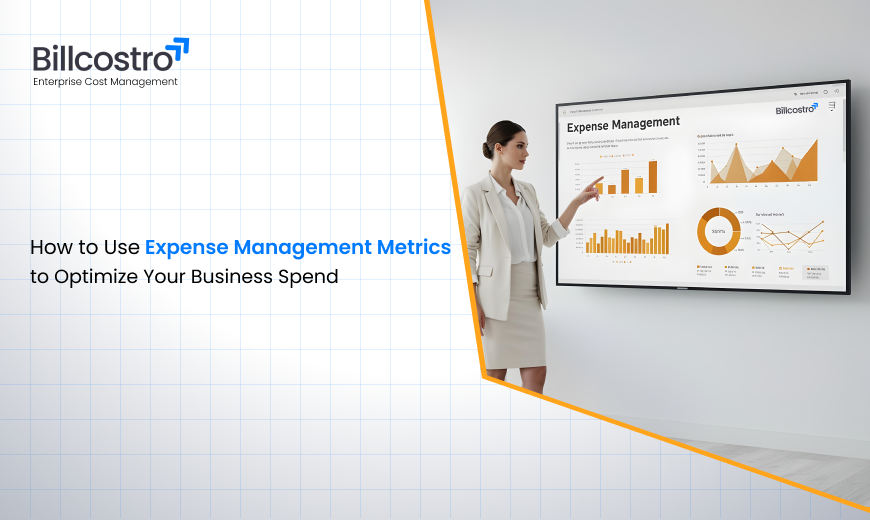
Aug. 25, 2025, 5:48 a.m.

Today, organizations of any scale are required to compete constantly. As a result, the need for small and medium-sized enterprises to implement cost control while also maintaining their turnover has become a challenging problem. Effectively managing expenses has shifted from being merely about budget cuts to making smarter financial decisions through the use of data-driven insights. Expense management metrics are instrumental in the better functioning of the cash flow cycle, which in turn could lead to the reduction of business overhead costs, the improvement of financial performance metrics, and so on.
This post outlines the use of expense management metrics to optimize your business, highlighting how adopting small business expense management software can make all the difference between success and failure.
Expense management has evolved beyond just tracking receipts and approving reimbursements. Essentially, it gives you transparency about the flow of money through the company. Metrics enable you to:
Without well-defined metrics, companies are often forced to make decisions based on hunches or rely on obsolete spreadsheets, which may result in excessive spending and poor resource allocation.
Key Expense Management Metrics to Track
1. Expense-to-Revenue Ratio
This KPI indicates the percentage of revenue that the company is using to pay for its operating expenses. A high ratio shows that the company is using a large part of its revenues to cover its operating expenses, thus leaving less money to the company as profit, while a low ratio is a sign of efficient expense management. By following this ratio on a monthly basis, you can make the necessary adjustments in your spending to quickly align it with your business performance.
2. Cost per Employee
This metric is the average cost of employee-related expenses, such as travel, training, and reimbursements. It is a great tool to spot the departments or teams that have a higher spending pattern. By implementing controls, you can cut down the costs that are not necessary even though you are providing the employees with the resources that they need to be productive.
3. Policy Compliance Rate
Employee compliance with expense policies significantly impacts the reduction of fraud and misuse. Less than satisfactory compliance rates indicate that it is necessary to improve the clarity of the policies or make the approval workflow for expense reports more automatic with the help of software.
4. Vendor Spend Analysis
By analyzing your spending on each supplier, you can find the money you can renegotiate the contract, consolidate your suppliers to get volume discounts, or source from alternative suppliers. Small businesses can use this method as one of the most powerful means to lower their business overhead costs.
5. Approval Cycle Time
Expense claims go through how many steps from submission to reimbursement? The longer the process of approval, the more employee dissatisfaction arises, and cash flow inefficiencies follow. The use of expense management software for small businesses to automate the approval process can make a big cut in the cycle time.
6. Recurring vs. One-Time Expenses
Separating recurring subscriptions such as SaaS tools from one-time purchases allows businesses to determine which expenditures are necessary and which are superfluous. This is very compatible with the SaaS cost reduction plans that companies implement to have better control over their budgets.
Using Metrics to Improve Budgeting
Metrics should not be gathered solely for reporting purposes. They must be the crucial tools that actively drive decision-making. Below are some ways to embed them into your budgeting process:
Manual processes can cause small businesses to make errors and violate policies without even realizing it. At this point, expense management software for small businesses becomes a game-changer. These gadgets provide:
Indeed, small businesses become money and time savers when they use expense report software. Besides that, they also receive transparency as well as control of every rupee spent.
The metrics for expense management are evolving as businesses digitize their operations. AI and machine learning are now able to foresee traditional spending and detect abnormal activity even before a company loses money. Beyond that, co-operations with business credit cards and payment systems allow for instant transaction tracking, which is an additional part of the total control system.
It is foreseen that the future of expense management will be leveraging automation along with predictive analytics to gain better, quicker, and more logical decisions.
Controlling expenses and monitoring financial key performance indicators should not make your head spin. Here is where Billcostro comes as an innovative expense management automation tool.
Billcostro assists companies to:
Use the capital for your company’s long-term growth and vitality by having a well-considered plan of expenditures.
By installing Billcostro, firms can bid farewell to manual tracking and welcome a more intelligent way to manage expenses, use the funds more wisely, and increase ROI.
Read more : How does Billcostro help companies save on operational costs
Expense management metrics form the basis of financial effectiveness. Businesses can reduce unneeded expenses, manage their costs, and get the best returns by measuring the right indicators, e.g., the ratio of expense to income, compliance with the policy, and spend with the vendor. The point is not only to gather the data but also to convert it into actionable insights through the use of automation.
Small and large companies, for example, can use tools like Billcostro to simplify their expense procedures, maintain their compliance, and verify that every rupee utilized is supporting the business. In a financial world where agility is the key to success, implementing expense management metrics is no longer a matter of choice but a must-have.